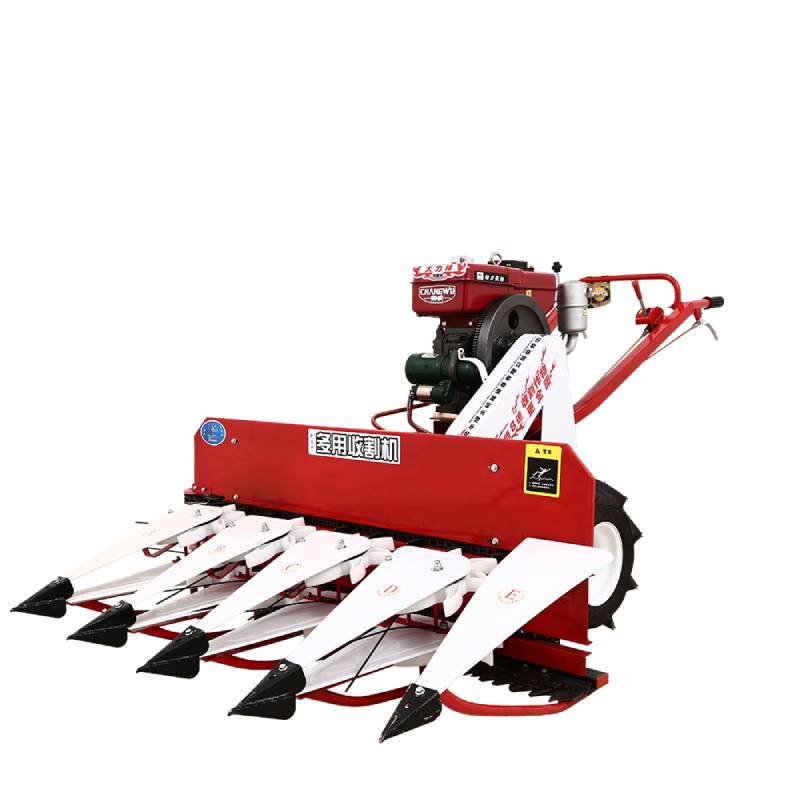Reaper Binder: Cuts & Ties in One Pass | Compact & Durable
Hercules Reaper Binder: Field Notes, Specs, and What Buyers Should Know
I spent a few muddy afternoons with crews in Hebei and northern Anhui, and one thing is clear: in tight planting windows and short-staffed harvests, a reaper binder is still the most cost-effective way to bring in small grains and leave tidy sheaves for sun-drying. Built in Julu Industrial Park, Xingtai City, Hebei Province, the Hercules line leans on straightforward mechanics and parts you can find without begging a city dealer—something many customers quietly value more than glossy brochures.

Where the market is heading
Two trends keep surfacing. First, labor is tight—especially during peak weeks—so small and mid farms want machines that one operator can run dawn to dusk. Second, straw value is back: forage, mushroom substrate, bio-bedding. A reaper binder that ties uniform sheaves simplifies transport and drying, and, honestly, it saves mental bandwidth in chaotic harvest weather.
Hercules GD120C2: key specs (binder configuration)
| Model | Hercules GD120C2 (reaper + binder unit) |
| Cutting width | ≈ 1.2 m (options around 1.0–1.5 m) |
| Engine | Diesel 12–15 kW; fuel use ≈ 0.8–1.2 L/acre (real-world may vary) |
| Throughput | 0.25–0.45 ha/h in wheat/rice at normal stand |
| Binding | Twine-knotter, sheaf Ø ≈ 80–120 mm; PP/biodegradable twine compatible |
| Drive | Belt + gear reduction; adjustable reel/knife speeds |
| Weight | ≈ 260–320 kg depending on options |
| Applications | Wheat, rice, barley, oats, buckwheat; lodged crop handling |
How it’s built (materials, process, tests)
- Materials: 65Mn or boron-steel cutter blades; 20CrMnTi gears; reinforced knotter cams; anti-corrosion coating.
- Methods: laser-cutting of guards, CNC-machined gear sets, induction-hardening on knife edges, phosphate + powder topcoat.
- Testing: functional run-in 2–4 hours; binding-cycle endurance (≥ 10,000 ties); vibration/fastener checks; noise and guarding per ISO 4254-1; performance validated against ISO 8210 field procedures.
- Service life: cutter sections ≈ 1–2 seasons; chain/sprockets 3–5; knotter cams 4–6, with normal maintenance.
Internal field notes (wheat, 18% MC, 70 cm stand, light lodging): average output 0.32 ha/h; visible header loss ≈ 1.2%; binding failure 0.7% over 4 hours. Your dirt, slope, and straw toughness will tweak those numbers.
Where a reaper binder simply works
- Terraced or fragmented plots where a combine can’t turn. - Lodged rice after storms (the vertical conveyor helps a lot). - When you want neat sheaves for sun-drying or high-value straw. - Co-ops doing custom harvest for smallholders. Many say it pays for itself in one to two seasons, mostly on saved labor.
Customization and options
Cutting width kits (≈1.0/1.2/1.5 m), left/right sheaf discharge, tire or mini-track undercarriage, extended reel fingers for lodged crops, stainless chute liners for wet rice, and twine choices (PP, sisal, bio-based). CE documentation is available for export shipments; factory is ISO 9001 audited, which—while not glamorous—helps with consistent assemblies.
Vendor snapshot (what you get for the money)
| Vendor | Price band | Lead time | Service/parts | Notes |
|---|---|---|---|---|
| Hercules (Hebei) | Mid | 2–4 weeks | Strong in North China; export kits available | Simple mechanics; good for co-ops, small farms |
| Local mid-tier brand | Low–Mid | 1–3 weeks | Regional | Aggressive pricing; check knotter parts availability |
| Imported premium | High | 4–10 weeks | Good, but costly | Refined finish; total cost of ownership higher |
Case snippets
Anhui rice co-op: switched to a reaper binder for storm-lodged fields. Reported a 20–30% time saving versus manual + small reaper, and more uniform drying. Hebei wheat grower: “Parts are local; we replaced knife sections in an hour.” That kind of practicality isn’t flashy, but it keeps harvest moving.
Safety and compliance
Guarding and emergency stops follow ISO 4254-1 principles. For performance verification, ISO 8210 field procedures are a sensible benchmark. EU-bound units can be supported with CE conformity per 2006/42/EC; always check local registration rules before import.
Authoritative references
- ISO 4254-1: Agricultural machinery—Safety—Part 1: General requirements.
- ISO 8210: Agricultural machinery—Combine harvesters—Test procedures (applicable benchmark methods for field evaluation).
- Directive 2006/42/EC (EU Machinery Directive) and CE conformity framework.
Latest news
-
Mini Combine Harvester for Paddy – Compact, Efficient Rice Harvesting SolutionsNewsNov.24,2025
-
Mini Chain Harvester: Compact Forestry Solutions for Sustainable LoggingNewsNov.23,2025
-
Kartar Mini Harvester – Compact, Efficient Harvesting Machinery for Small FarmsNewsNov.23,2025
-
Compact Power: Elevate Your Farming with Harvesting Machine SmallNewsNov.22,2025
-
Discover the Power and Potential of Harvester Mini Combine Machines | Efficient Small-Scale HarvestingNewsNov.22,2025
-
Compact Harvester Machines: Small-Scale Agriculture’s Big AdvantageNewsNov.21,2025








